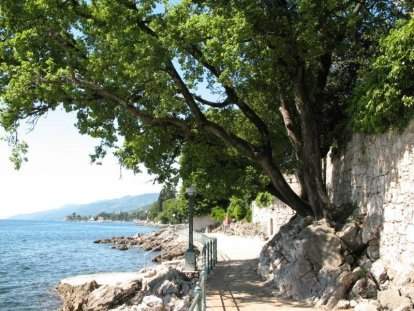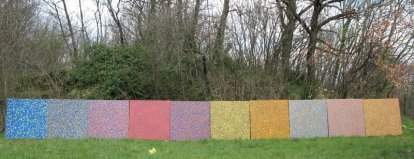
Fig. 1. Deeply rooted old oak tree along the seaside promenade (photo
by Miljenka Šepić)
OLD OAK TREES RECORDED IN OPATIJA
The existence of protected old trees (that are a part
of the natural heritage of any region) is inextricably and closely linked
to spiritual, traditional, artistic and architectural endeavours belonging
to cultural heritage. Croatia boasts a number of fine examples. There
is the beautiful, ancient cypress tree in the garden of the Franciscan
monastery in the town of Hvar, the small but hardy pine growing on the
stone roof of the chapel of St. Peter at Nerežišće (Barač Island), “Gubec’s
Lime Tree” in Gornja Stubica, the ancient plane trees at Trsteni,
and many other protected trees or groups of trees, especially near churches
and monasteries throughout Croatia.
In the Primorsko-Goranska County, the protected old downy
oak (which sustained severe damage during a recent storm), located at
the hamlet of St. Peter in the Tramuntana region of Cres Island, was the
source of many legends, and it inspired the academic Branko Fučić to write
a moving passage in his well-known book Apsyrtides. The old black poplar
tree in Vinodol was an inspiration to folk poet Anica Tomašević who dedicated
a lovely poem to this tree.
Recently, Miljenka Šepić, a painter from Opatija, approached
the Public Institution “Priroda” with a proposal of having protection
provided to the old oak trees of the Opatija and Liburnia coasts. These
oak trees are an irreplaceable part of the region’s natural heritage,
inextricably linked with its architectural culture. The remarkably harmonious
way they have been incorporated into the urban and natural fabric of the
Liburnia coastline reveals an overriding concerning for nature. Without
these trees, neither Opatija nor Liburnia would be what they are today.
The powerful roots of these trees have resisted through centuries, protecting
the layers and vitality of terra rossa soil, accumulated over the millennia
at the very foot of Mt. Učka, and prevented it from eroding and being
washed into the sea (Fig. 1). Regretfully, we are witnesses to the increasingly
rapid disappearances of these valuable trees.
For many years, the oaks of Opatija have fascinated the
painter Miljenka Šepić. While observing their existence, she has gradually
compiled and systemised a list, recording the locations of most of these
giant oaks, and she has used her camera to document them. At present,
she is also preparing a book about these majestic oaks. Nature and trees
provide a daily inspiration to her artistic work (Fig. 2 and 3).
What is particularly interesting in the entire tale that
Miljenka told us, is the fact that Ferruccio Ritossa, retired professor
of genetics at Bologna University, is also interested is Opatija’s oak
trees. He claims that Opatija is probably the only place – or one of the
rare places – in Europe where as many as five species of oak grow together
along the coastline (Turkey Oak, Downy Oak, Sessile Oak, Holm Oak and
Cork Oak) . Professor Ritossa, a friend of the painter and yet another
aficionado of Opatija’s oaks, is also an artist, seeking to bring science
and art together.
The efforts that Miljenka Šepić has made dovetail with
the concept of inventorising and protecting valuable old trees in the
Primorsko-Goranska County. It is our wish that the network of aficionados
in Opatija’s oak trees will expand, creating a precondition to providing
protection that is more effective.

Fig. 2. Trees; dimension 100 x 100 cm; by Miljenka Šepić

Fig. 3. Tree-shadow; dimension 1000 x 100 cm; 2008; by Miljenka Šepić



